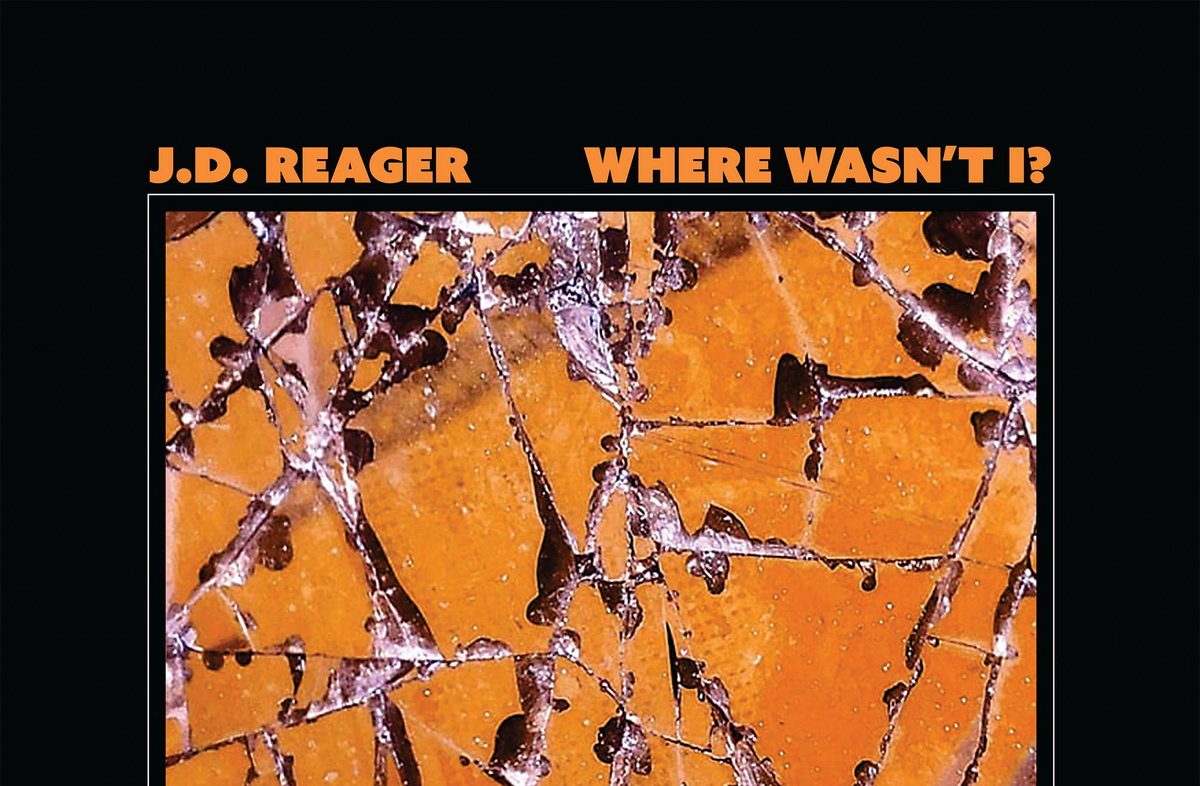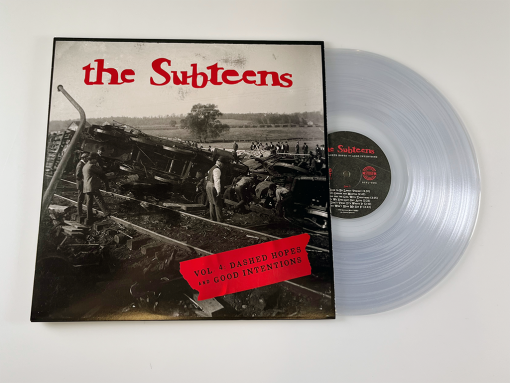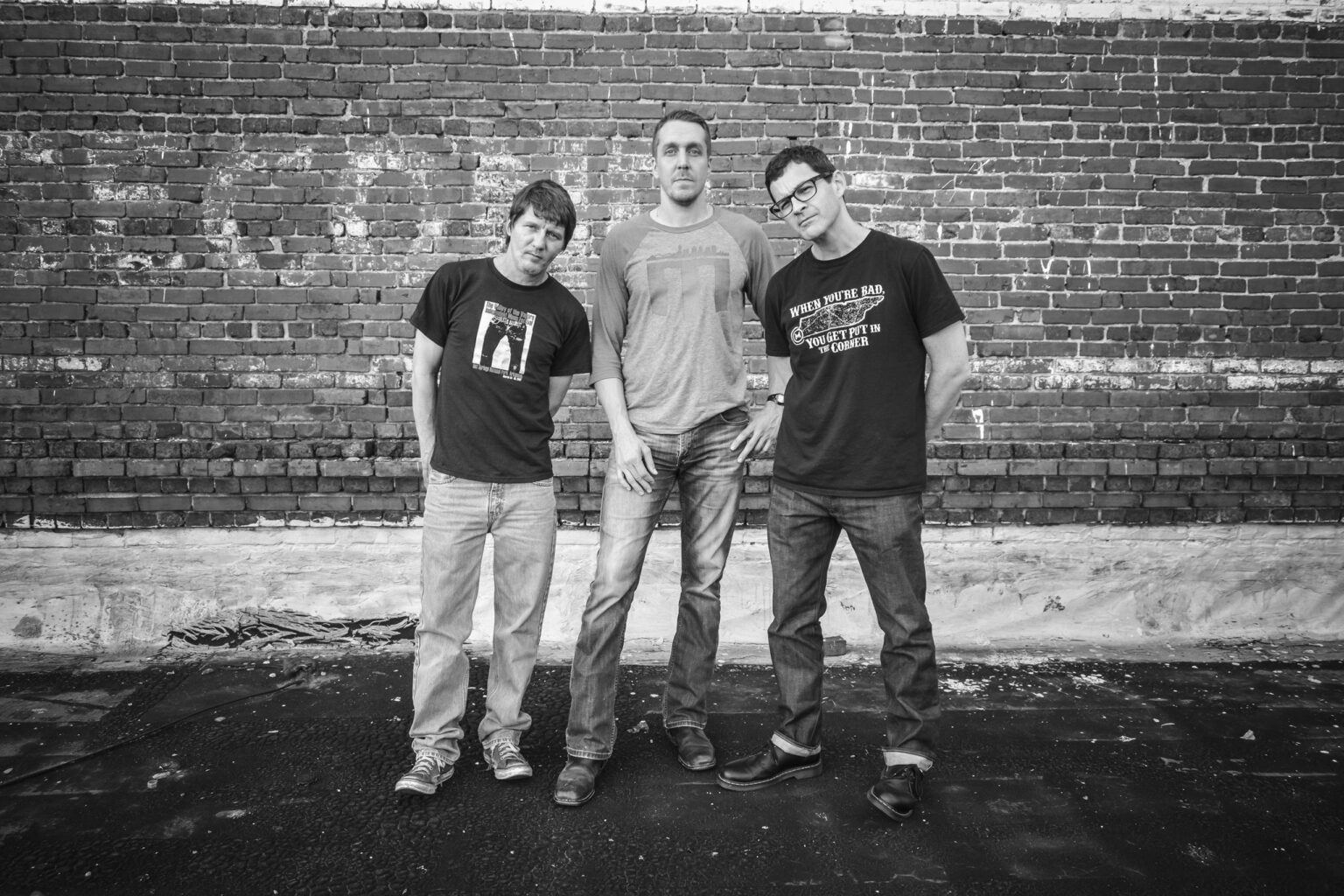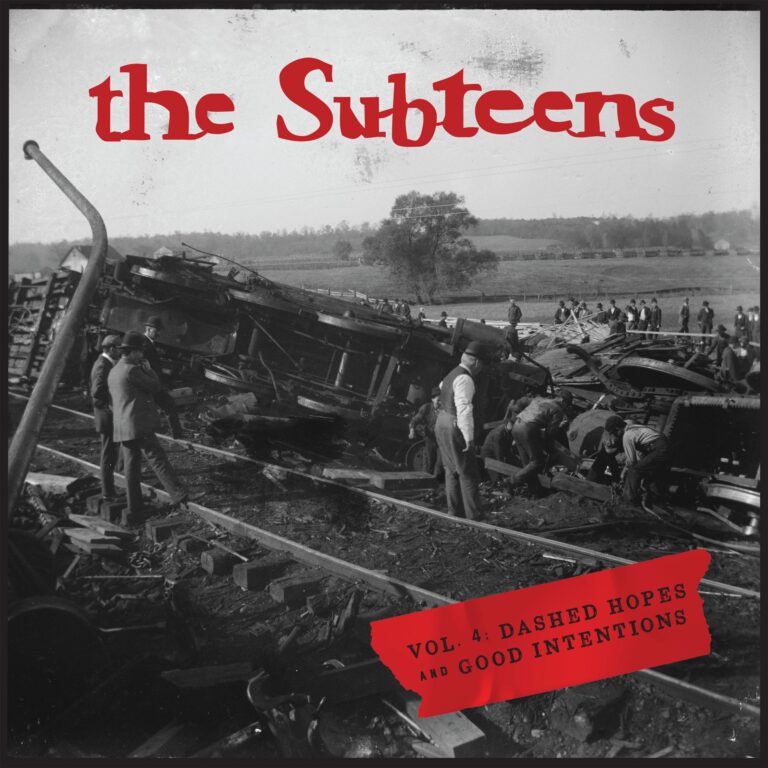The resurgence of vinyl records has not only brought a plethora of new material sporting colorful platters and beautiful cover art, it’s given a second life to albums that were originally released when CDs were king. The vagaries of time having winnowed the wheat from the chaff, albums from decades past that have only taken on more artistic value can now be elevated to a more perfect medium: vinyl.
None are more deserving than the Subteens’ 1999 CD-only debut, Burn Your Cardigan, freshly reissued on wax by Back to the Light Records last month. Recorded just after seminal punk/indie drummer John “Bubba” Bonds joined the group, it revealed what a perfect complement he was to the visions of co-founders Mark Akin (guitar and vocals) and Jay Hines (bass), and established the Subteens, with their mastery of adrenaline-charged pop-punk originals, as one of the best Memphis groups at the turn of the 21st century.
Yet, as Hines relates today, Bonds was nervous about the sessions. On the first day of recording, Hines says, “We had to go find him, and it was raining really hard. He was down at the South End or somewhere, and we had to go get him, get his drums, and then go by Buster’s to get him a fifth of Jack or something. Then we went back to the studio and got busy.”

Not that any of them were plastered as they recorded. They took the album very seriously. “We were just trying to get him to relax a little bit,” says Hines. “He didn’t get sloppy or anything — he played to a click track on a lot of that. But that made him nervous. Also, he had just joined the group. We had had maybe one practice and maybe one show with him at that point. But he just nailed it. Most of those [songs] were done in one or two takes. So miraculous!”
Also seemingly miraculous at the time was the studio’s proximity to cheap eats. The sessions were booked at Robbie Pickens’ Nu-Star Studio, not a well-known recording destination even then. “It was over off Summer behind Sonic. You could literally walk out of the studio, climb over his back fence, and be at Sonic. So that was amazing,” Akin recalls today.
“Robbie was not a typical person that a Midtown fan would seek for help producing a record, you know?” notes Akin. “I can’t remember why we ended up with him. Maybe he was just cheap. But for whatever reason, the stars aligned. Robbie really understood the punk that we were coming from. But I think he also understood that we wanted a little bit of gloss on it, a little bit of pop sensibility. Robbie was able to have a foot in both of those worlds and bring it together. I just can’t overstate enough how helpful Robbie was.”
Surprisingly, for a band that seems to have had great guitar sounds dialed in from the start, the crunchy riffs of Burn Your Cardigan came down to Pickens’ production skills. “I could not get the guitar sound right,” says Akin. “And finally, Robbie was like, ‘Mark, leave. Go to Sonic! I’m going to get your guitar sound.’ Later, he calls me to come back in and listen to it, but he won’t let me see what he’s done. And it sounds fantastic. Then he said, ‘Okay, let me show you how I got it.’ He had put a really small amp, like a Pignose, in this tiny closet, and had somehow gotten this magical guitar tone out of it.”
The end result was indeed a perfect blend of noisy punk attitude and the band’s unmistakable pop instincts. “Even our favorite punk bands are really pop bands at heart, or at least my favorite punk bands,” says Akin. “The Sex Pistols, the Ramones … And Jay’s really into the Buzzcocks, Sham 69. I’m really an AC/DC [fan]. That’s all hooky pop, just with harder rock guitar tones and different tempos. And every single one of those songs are arranged with a purpose and they’re arranged in a sensible, linear way.”
The ultimate statement of this approach may be Side One’s closer, Billy Joel’s “You May Be Right,” thrashed out with complete sincerity as if it were the latest track by the Clash. There’s a defiance to the track that helps one understand the band’s historical context. The late ’90s were trending away from the punk/pop axis, toward more introspective, watery styles like “shoegaze.” Shoegaze bands, it must be said, often ditched the rock-and-roll threads of jeans and a T-shirt in favor of … sweaters.
“The title of the album was totally Mark,” says Hines. “This was back when he was working at the Memphis Pizza Café, and I came in and he had this funny look on his face. He said, ‘What would you think about …’ — and he sort of hesitated, I guess because he thought I would laugh at it — ‘Burn Your Cardigan?’ And once I realized where he was coming from, I thought it was perfect.”
No shoegazing was going on with these guys. As Akin remembers, “When we first came out, we weren’t super well received. I feel like people didn’t quite know what to make of us at first because we wrote songs with beginnings, middles, and ends. We tried to have a chorus that got in your head and we tried to make the songs short. We would just go to play 10 songs and get the hell offstage. But then when that record came out, I think it really represented what we were all about. ‘This is what we are!’ And we started getting more people at the shows, and that never stopped. It’s always fun to have people come and watch you play.”
The Subteens cap off the Record Fair at Soul & Spirits Brewery on Saturday, June 15th, and will celebrate the reissue of Burn Your Cardigan with the River City Tanlines at Bar DKDC on Saturday, July 6th.







